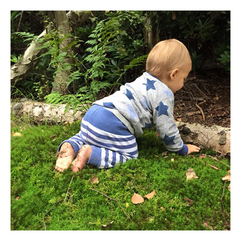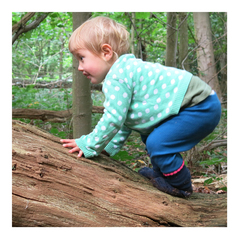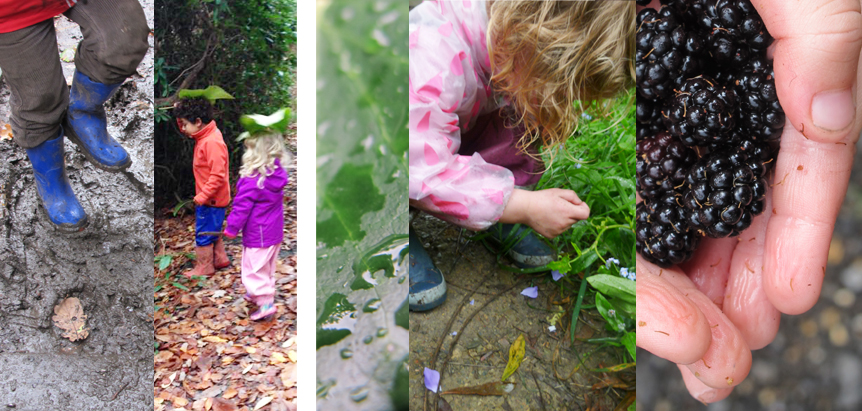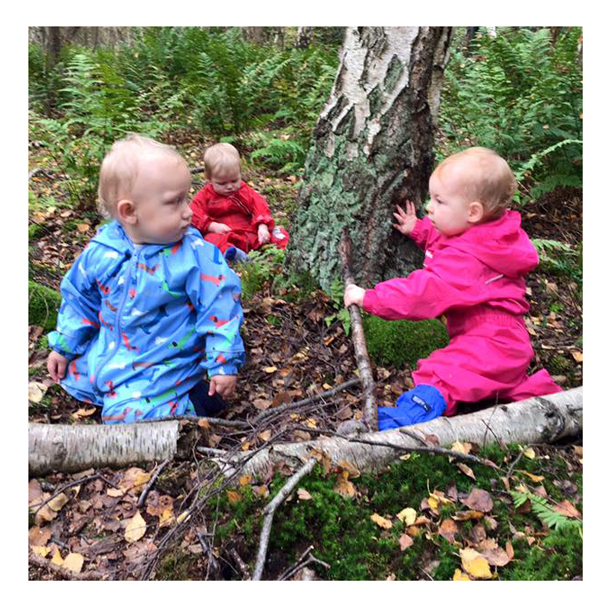 Written by Clare Caro - with help from Maria Reyna, Hannah Pattison, Belle Clark, Natasha Morabito, Sophie Christophy and Ana Weller. Water is amazing stuff - no doubt about that. Our bodies are about 70% water, we need clean drinking water to be healthy and survive, it is needed to grow the food that we eat. Basically we need it to stay alive... water IS life. According to the World Health Organisation there are 783 million people in the world who do not have access to safe drinking water, that is about 1/8 of the world's population. Here in the UK, the demand for water has been growing 1% each year for the past 75 years, with water scarce in some parts. As a culture we are used to having clean water 'on tap' and we each use on average 150 litres a day. Perhaps we could go as far to say that our culture around water needs a bit of a wake up call; while there are people in the world without safe drinking water, we are flushing 30% of our total clean water a year (wait for it...) down the toilet! Unlike many other countries with a safe water flow problem, we have the most marvellous source of life, we have rain! Enough rainwater falls in the UK to more than meet the needs of everyone here. The organisation Save The Rain have calculated that "if half of the 60 million plus people living in the UK saved rainwater (e.g. half of all dwellings fitted with rainwater harvesting systems), this would save over 750 million cu.m. of treated mains water a year." - in litres, thats 75 billion. This water which is life, that falls in drops from clouds in the sky, could it be something to celebrate? Here at Nature Play we think so, and this is just one reason why we take our children out to play in and celebrate rain. Nature Play groups run every week, in every season, every weather, and some of the wettest sessions have been the most memorable for those of us who are there every week to host. It also turns out that there are some parents and children who make a special effort to attend Nature Play when it rains, getting out in the rain can really be a magical experience. “Rain is beautiful, especially in the woods, it is nothing like the rain you experience in a city. The sound of raindrops on the tree canopy... colours and smells are more intense after rain.” - Maria Reyna, Nature Play Croydon Children are experiencing everything at a heightened sensory level. Days out in the rain gives them experience of different kinds of rain, an appreciation of rain, and it affords them a relationship with rain and the all-important water cycle of life. To build this rain relationship as a full 'body of knowledge' you need to be out in it. You cannot gain a true rain=appreciation inside. “The different types of rain and their accompanying sounds and effect on the earth... the drizzle that feels like walking in a cloud... tiny bits of steam rising where the sun came through after the rain. Intercepting rain on the leaves and the accompanying play - as it’s propelled off in various ways. Large leaves [were] poked at with sticks and the collected water gushed off like a waterfall!” - Hannah Pattison, Nature Play Peterborough Playing in the rain, is learning about the rain. When you are in it, you learn which rain runs off the ground, how wet the earth will be, how quickly it will soak in, how much has collected on the trees, what the clouds are doing, and which kinds are pleasant to be out in, and which kinds are best sheltered from. Whether you are busy playing or on the move, you become a part of the rainy environment with water collecting on your nose and eyelashes and fingers going wrinkly. "I love raindrops on noses. No amount of gear can avoid that wondrous and alive feeling of the elements on your face. I stopped carrying an umbrella once I realised that my baby, who is often on my front, was arching her back to feel the rain on her face. …We have glorious rain." - Belle Clark, Nature Play, Nelson NZ Nature Play sessions in the rain make for a totally different experience, in that the walking becomes a way to notice and find things that were not there when it was dry. Its not always possible to find a dry place to sit, so new places are found for shelter, exploring and discovery. “A tree had been uprooted and fallen over, some of the children spent ages over a number of weeks 'drilling' in the muddy tree roots. Then one day when it had been raining they started to make little 'claymud' balls and cups, and lined their objects up on a log that was a 'shop'.” - Natasha Morabito, Nature Play, South East London We have found the adults' role at Nature Play changes with the rain. Once we let go of our fears around getting wet, dirty or wet and dirty, we let go and start enjoying ourselves. We too find ourselves entering the world of rain-play. “A muddy lake appeared as if by magic. The children were lost in wonder, their senses totally captured by the sights, smells and sounds of the downpour. The adults were liberated, with wide grins and a rebellious sense of wild abandon. ...We had water running down our spines.” - Sophie Christophy, Nature Play North London Our own rain memories start floating to the surface... "The possibility to manipulate the flow of the rain itself. I remember making dams as a child and that's exactly what the children started doing on the bridge one day, using leaves as boats to send over the edge of the waterfall that had built up." - Ana Weller, Nature Play South East London UK Our own precious memories seldom include an adult directing our play. Remembering that can make it a little easier to know when to play along side our children sharing an appreciation of the rain, and when to take a step back. When we add rain to a day out playing, play is given new life, it unfolds differently as does the child who plays in the rain. To get to know the rain, the seasons of rain, and the world when it is raining, we begin to appreciate how lucky we are to have a rainy day. “It all goes back to the principle of stepping back and observing. If you do the same with nature you will find it infinitely more beautiful and moving!” - Maria Reyna, Nature Play, Croydon Need help to get enthusiastic about rain? What if we tell you There's No Such Thing as Miserable Rain.
...take me back to the A R T I C L E S menu. Written by Clare Caro You know that old saying 'there is no such thing as bad weather, just bad clothing'? Well we know that it also applies to footwear! Keeping feet warm and dry is not as easy as popping a hat on, so we have brought you some ideas to help, making it possible to keep feet warm while playing for hours outside, especially on those wet, cold days. Warmth On those really cold days, you know its time to head in when your toes start going numb. We have two top tips for you, on how to keep toes warm when you are spending hours playing outside.
Soles Have a thin and flexible sole is important for young players learning to navigate uneven surfaces, finding their balance, and needing to move freely. According to the feet and shoe specialists at Vivo Barefoot “70% of your brain’s information for movement comes from the nerves on the soles of your feet; the more you can feel the ground, the greater your body’s understanding of its surrounding environment.” We suggest that crawlers have footwear made from material, this enables them to move freely and use their feet in a way that they simply can't with shoes on. For toddlers and older children, having footwear with a flexible sole means they can navigate uneven surfaces safely. Here are some top tips for choosing a sole that supports play -
 Barefoot Many parents find that their children want to be barefoot. Your children along with the orthopedic specialists, know that barefoot is best. By going barefoot they are not only developing their feet, sensory system and balance, but they will also be connecting to the earth, something widely know as Earthing. Going barefoot on a mild or warm or wet day is good for the sole! We need to provide barefoot time both inside and outside. It’s always good to remember that feet are waterproof and washable. If it is too cold then, then try warm socks which you can wash, or footwear that is like being barefoot – with room to move and a flexible soul, then we can have the best of both worlds.  Cold When the temperature really drops, we really recommend layering – both with clothing and your feet. With wool next to your skin, and another pair of socks on top, then your footwear its possible to keep feet warm for hours when there is ice on the ground. For the more experienced walker, an insulated pair of snow boots can make for warm feet when it’s below zero. Recycling There are plenty of good reasons to look for used footwear for our children.
Some Practical Suggestions Here are a few ideas, to give you an idea of what is possible - Material Bootie For the wee baby, the commando crawler, the crawling cruiser and for the one still getting to grips with being on two feet. You can't move freely with a shoe or boot, you need to be able to move and bend your feet, to grip with your toes, you need a material bootie.
Do It Yourself A thick pair of woolen socks and a pair of plastic bags tied on around the ankle. Sometimes we need to make do with what we have around us. Whether you are making your own, or have a pair of booties that don't quite fit, then try securing on with 'velcro strips', cheap and easy to pick up. Flexible Sole For those now really into walking a long way, no longer dropping down to crawl, need some more protection now, its time to get some sole. Natural Rubber Greenpeace are running a campaign to get people using and buying outdoor gear free from PFC’s, which stands for per- and poly-fluorinated chemicals. PFC's are polluting the Earth, and some PFC's can cause harm to the human body - they also happen to be used by many manufactures of waterproof and dirt-repellent products. While we fully appreciate that it can be hard to find what some products are made from, if you are looking for a pair of wellies that is non-toxic then natural rubber is a good start. Here are a couple of companies making 100% rubber boots - not toxic chemicals.
Looking for a one-stop-shop for getting the right shoes for your little ones feet? We recommend Happy Little Soles - www.happylittlesoles.co.uk If you found this helpful, you might like to read our post on Going Outdoors in the Winter: How to Dress
...take me back to the A R T I C L E S menu. |
|
Copyright © 2024 Nature Play
|




 RSS Feed
RSS Feed